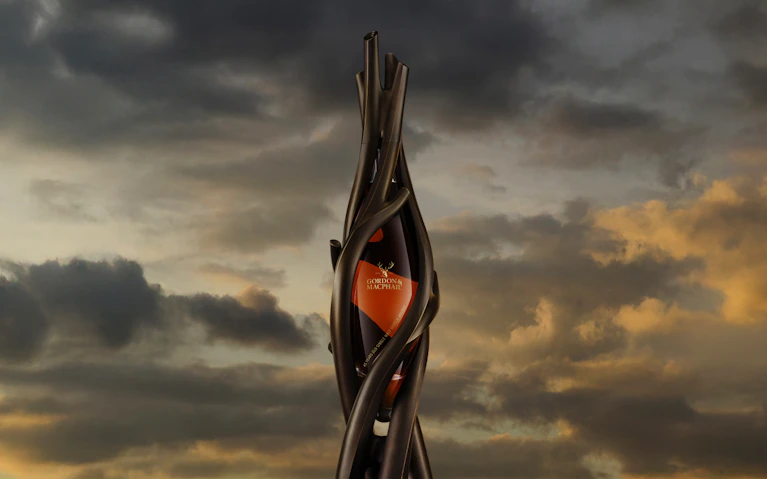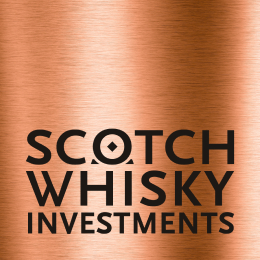
A new balance between supply and demand
The whisky market seems to regain its balance
The whisky market is currently in a phase of correction and reorientation. While the secondary market is showing signs of stabilization, the primary market remains under pressure with declining exports and reduced production. Interestingly, parallels are emerging with the 1980s, when scarcity laid the foundation for many of today’s most iconic bottlings. For investors, the key lies in selectivity and maintaining a long-term perspective. Scotch Whisky Investments analyzed the latest findings from the Noble & Co Whisky Intelligence Report (Q3 2025).
Stabilization in the Secondary Market
After two years of sharp declines, the secondary whisky market appears to be finding its footing again. This is supported by both the Noble & Co report and analysis from The Spirits Business. Between April and July 2025, trading volumes fell by 26% and total market value by 40%. However, these figures are no worse than those recorded over the previous twelve months, indicating a degree of stabilization. The average price per bottle offers the clearest signal of this trend: in the third quarter, prices rose by approximately 10% compared with the previous quarter.
This development marks the beginning of a more stable pricing environment following the volatility of recent years. The market appears to be settling into a realistic price range. If this trend continues through the fourth quarter, it will confirm that the secondary market is no longer correcting but consolidating.
Another encouraging sign is the sharp decline in unsold bottles at auction. At the peak of the 2024 correction, more than 10% of all lots failed to sell, a clear indication of oversupply and cautious demand. Today, that figure has dropped to around 2%. Increasingly, bottles are once again finding their way to collectors and investors. Supply and demand are coming back into balance, albeit at lower price levels, but with greater maturity among both buyers and sellers.
The quick traders and speculative buyers have largely exited the market. What remains are careful investors and serious collectors. This creates a healthier dynamic: buyers are more discerning about provenance and value, while sellers have become more realistic in their expectations.
Scotch Whisky Investments
“The market is maturing: more realistic, with a focus on scarcity and authenticity. This is a development that inspires confidence.”
As a compass
Showpiece bottlings
Showpiece bottlings continue to serve as an important barometer. The Bowmore Arc-54 Iridos Edition and The Macallan Lalique decanters once again attracted international attention this year. Their success demonstrates that true rarity, supported by craftsmanship and a compelling story, remains resilient in the face of price corrections.
A recent example is the oldest Scotch single malt ever bottled, the 85-Year-Old Glenlivet by Gordon & MacPhail, released earlier this month. Drawn from a single cask filled in 1940 and bottled in 2025, it represents liquid heritage at its finest. Only 125 decanters were produced, designed by Jeanne Gang, symbolizing the interplay between time and material.

Bowmore Arc-54 The Iridos Edition

Glenlivet 85-jarige door G&M
Pressure on the Primary Market
In contrast to the stabilization seen in the secondary market, the primary market is facing significant headwinds. Export volumes of single malt have declined by approximately 40% since 2022. While this is challenging in the short term, it also lays the groundwork for future scarcity.
Many distilleries have already scaled back production by 30% to 50%. Though painful in the near term, these adjustments are essential to restoring balance between supply and demand.
A key reason for optimism is the new trade agreement between the United Kingdom and India. Until recently, Scotch imports were subject to a 150% tariff, a major barrier in the world’s largest whisky market. The agreement will gradually reduce this rate to 40% over ten years. According to the Scotch Whisky Association, this could increase exports by around £1 billion within five years.
Exports are expected to recover modestly in 2026, although a return to pre-2019 levels may not be realistic until around 2028.
Lessons from history
Today’s dynamics closely mirror those of the 1980s, when economic headwinds led to major reductions in production. Whiskies from that era are now highly sought after. The parallel is clear: the scarcity being created today may well form the foundation for the icons of tomorrow.
For investors, this environment - despite its uncertainties - offers opportunities. The key is not to invest indiscriminately, but to focus selectively on Scotch single malt whiskies with proven reputation, historical significance, or exceptional rarity.
Conclusion: a mature market with opportunities
The whisky market is moving toward maturity, more realistic, more discerning, and with a stronger emphasis on scarcity and authenticity. For investors and collectors alike, this is not a time for quick gains but for careful selection. The strength lies in whiskies with a proven legacy and releases
Would you like to learn more about the history of the whisky market and the dynamics of whisky investment? Download our new whitepaper for further insights.
Sources
Noble & Co, Whisky Intelligence Quarterly Report, October 2025.
The Spirits Business, Showpiece whiskies shape secondary market, October 2025.
